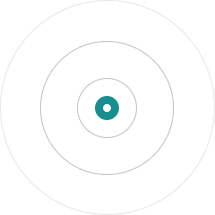Activated carbon is a kind of carbon with a special microcrystalline structure, which has the advantages of a developed pore structure, a huge specific surface area, and strong adsorption performance. It is widely used in various industries and fields. Dingli is a professional manufacturer of activated carbon plant. We can provide customers with EPC solutions from five aspects: biomass carbonization, carbon activation, activated carbon regeneration, activated carbon acid washing and water washing, and crushing and screening!
We mainly use the physical production process, taking air and water vapor as activators, and combining it with special rotary kilns to produce activated carbon under high-temperature conditions. The activated carbon produced by this method has the advantages of strong adsorption performance, high mechanical strength, small fluid resistance, stable chemical properties, high purity, and easy regeneration.
Applicable materials:
Wood, sawdust, coal, walnut shell, coconut shell, oil palm, bamboo, palm kernel, petroleum coke, etc.
Process flow:

1. Biomass Carbonization Process
Raw materials need to be carbonized through a carbonization furnace before entering the activated carbon rotary kiln. After the material enters the feed bin through the feeding port, it is fed into the carbonization furnace by the screw feeder. Depending on the inclination and rotation of the furnace body, the material moves slowly from the feeding port to the discharging port, gradually passing through the drying zone, the pyrolysis zone, and the carbonization zone. In this process, the carbonization furnace heats the material through thermal radiation so that the material is decomposed at high temperature to discharge non-carbon substances such as oxygen and hydrogen, and form fixed carbon with a skeleton structure and a certain strength to the greatest extent.
2. Carbon Activation Process
Carbon activation is mainly carried out in an activation furnace. Carbon activation refers to the use of water vapor, CO2, oxygen, and other oxidizing gases as activators, contacting with carbon at high temperatures so that the carbon surface is eroded and a developed pore structure is formed, which has a strong adsorption capacity.
3. Activated Carbon Washing Process
The activated carbon washing process can be divided into the acid washing process and the water washing process. Main purpose: reduce heavy metals contained in activated carbon; degrade TDS concentration; adjust PH value; reduce dust on activated carbon surface and pores.
4. Activated Carbon Regeneration Process
Activated carbon regeneration is the gasification reaction of adsorbed saturated activated carbon with water vapor and oxygen at high temperatures so that the organic matter blocked in the micropores is removed and its adsorption performance is restored.





The principle of carbon activation is to use water vapor, flue gas, and other oxygen-containing gases as activators to contact with carbon at high temperature to generate carbon monoxide, carbon dioxide, hydrogen, and other hydrocarbon gases. Through the gasification reaction of carbon, many pores are formed in carbon particles.
The activation reaction belongs to the multiphase reaction of the gas-solid system. The activation process includes physical and chemical processes. The whole process includes the diffusion of the activator in the gas phase to the outer surface of the carbonized material, the diffusion of the activator to the inner surface of the carbonized material, the gasification reaction on the surface of the carbonized material to produce intermediate products, the decomposition of the intermediate products into reaction products, the desorption of the reaction products, and the diffusion from the inner surface of the carbonized material to the outer surface.

| Model | Output Capactiy(kg/h) | Drum Diameter(m) | Drum Length(m) | Dimensions(m) | Output Ratio(%) |
|---|---|---|---|---|---|
| DLHH2210 | 80-100 | 2.2 | 10 | 11.1*2.6*3.0 | 2.2-2.6 : 1 |
| DLHH2510 | 120-150 | 2.5 | 10 | 11.3*3.0*3.5 | 2.2-2.6 : 1 |
| DLHH2810 | 170-200 | 2.8 | 10 | 11.5*3.4*4.0 | 2.1-2.5 : 1 |
| DLHH2815 | 250-300 | 2.8 | 15 | 16.5*3.4*4.0 | 2.1-2.5 : 1 |
| DLHH3215 | 320-400 | 3.2 | 15 | 16.6*3.8*4.4 | 2.1-2.5 : 1 |
| DLHH3615 | 430-540 | 3.6 | 15 | 16.6*4.2*4.8 | 2.1-2.5 : 1 |
| Raw Material | Coconut Shell Carbon | Apricot Shell Carbon | Wood Carbon | Coal Carbon |
|---|---|---|---|---|
| Iodine Adsorption Value(mg/g) | >1000 | >1000 | >1000 | >800/1000 |
| Methylene Blue Adsorption Value(mg/g) | >9.5 | >10 | >12 | >8 |
| Moisture(%) | <3 | <3 | <3 | <3 |
| Strength(%) | >98 | >96 | >95 | >94 |
| Output Ratio | 2.1:1 | 2.3:1 | 3.0:1 | 2.8:1 |
| Output Capacity(t/24h) | 3-5t | 2.6-4t | 2.2-4t | 3-6t |

